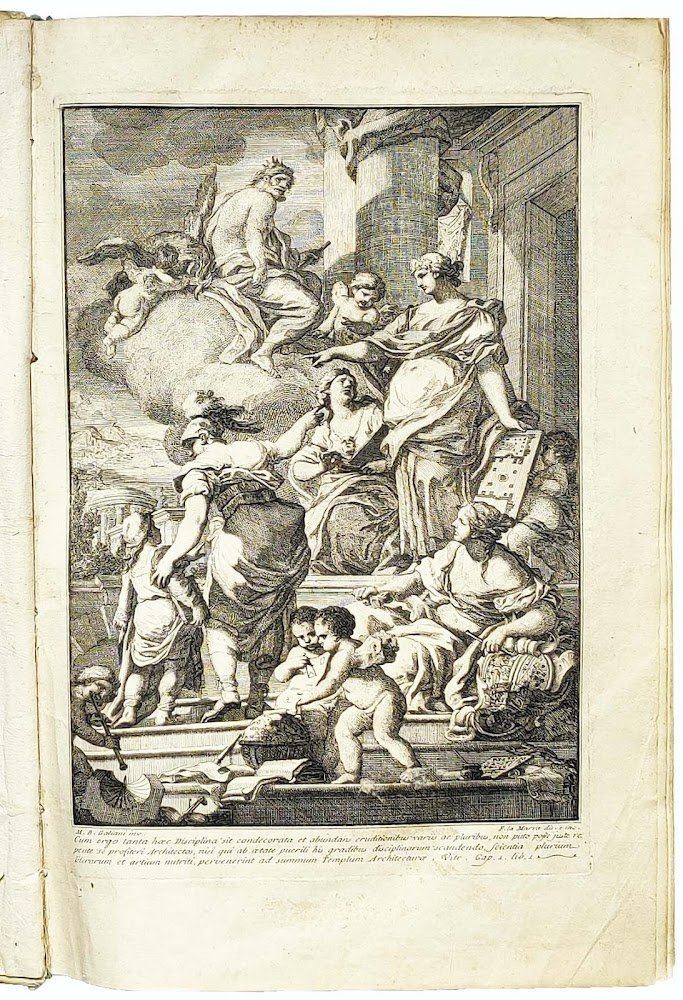
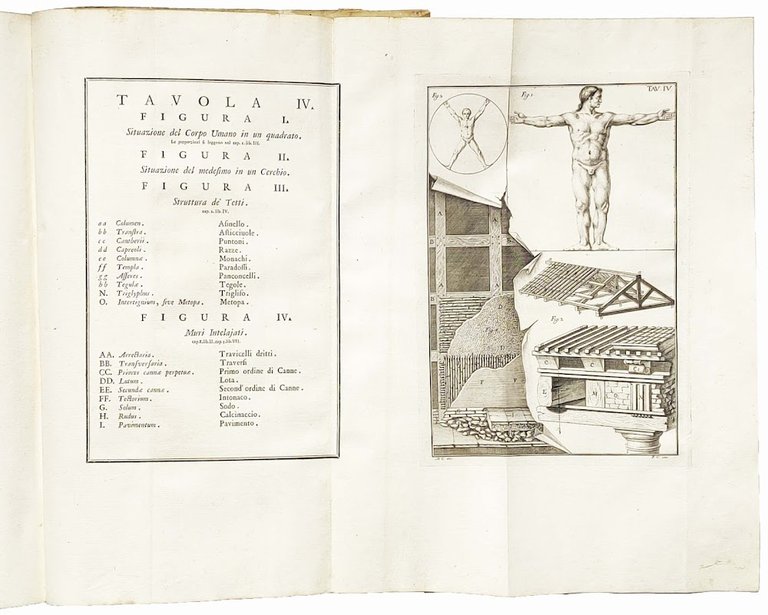
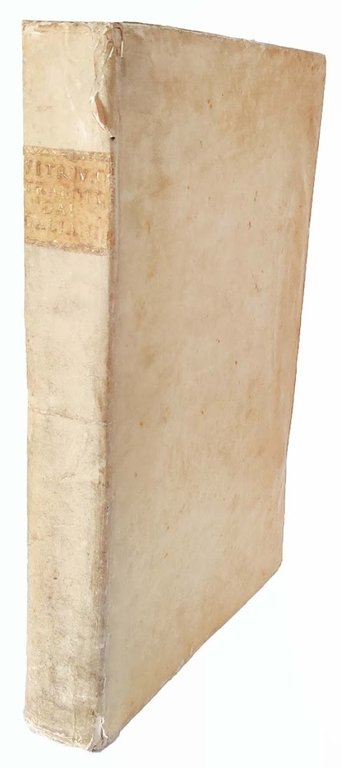
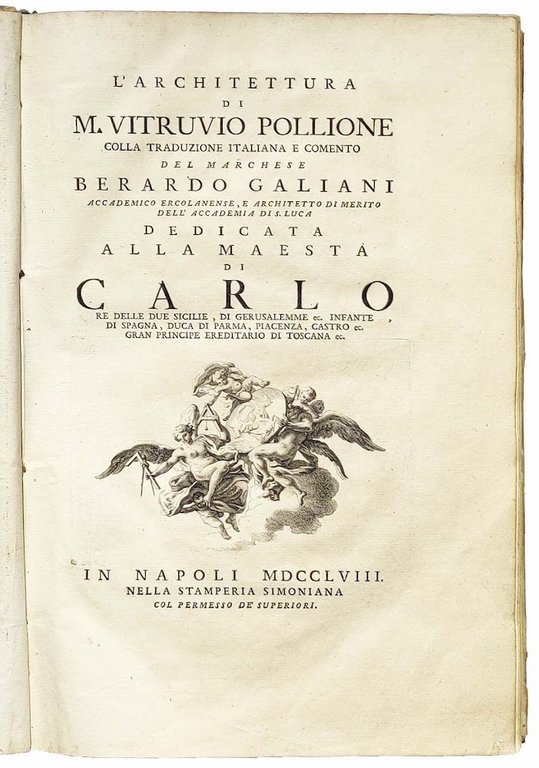
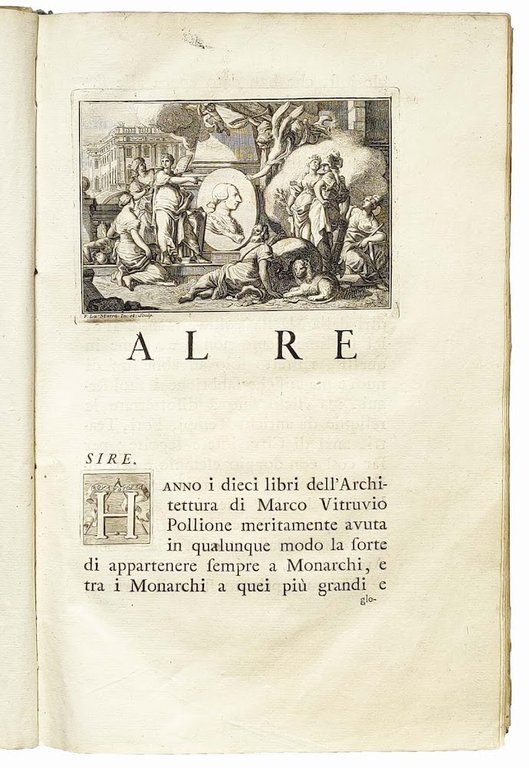
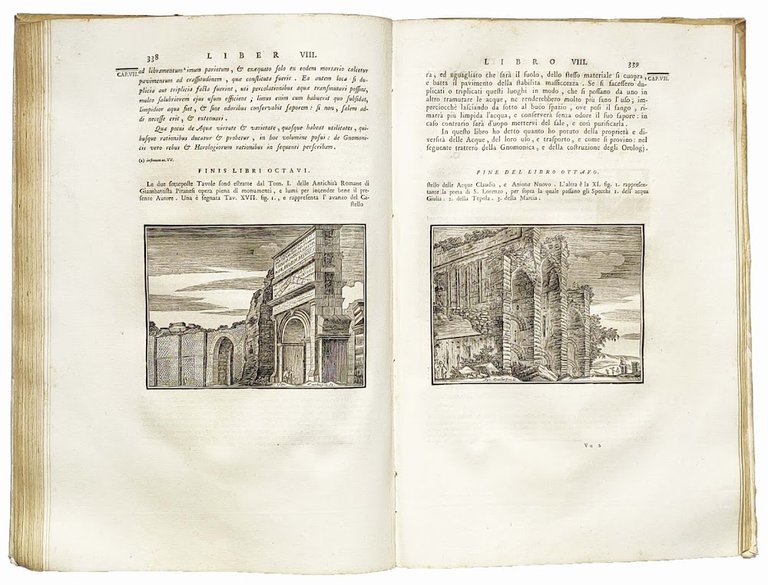
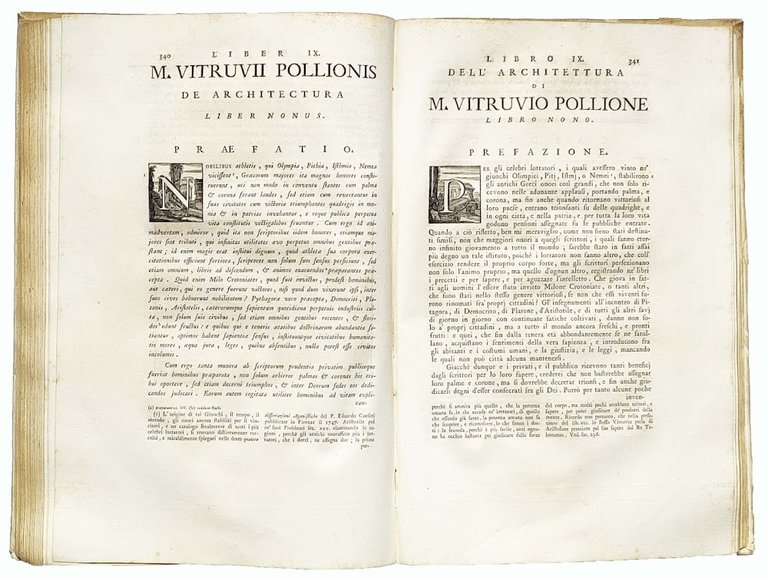
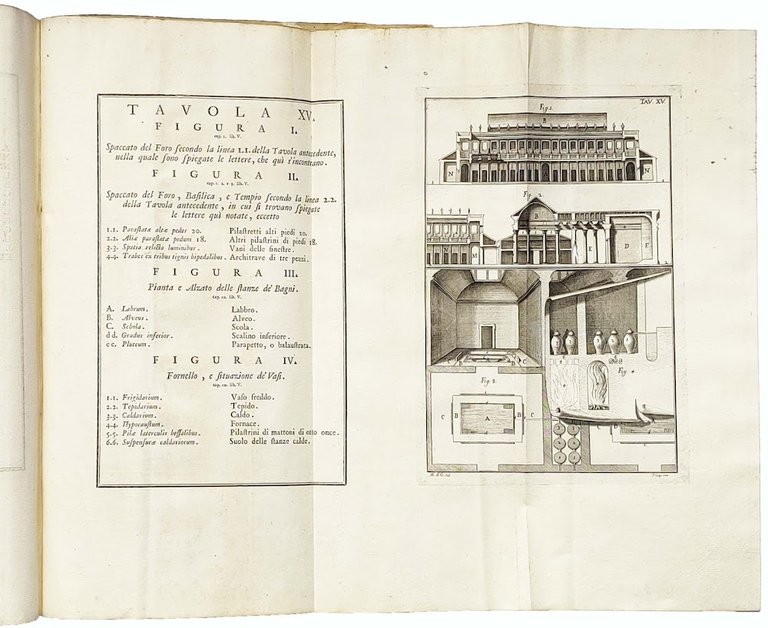
Rare and modern books
VITRUVIUS POLLIO (fl. 1st cent. BC)-GALIANI, Bernardo (1724-17
L'Architettura di M. Vitruvio Pollione colla traduzione italiana e comento del marchese Berardo Galiani [...] dedicata alla maestà di Carlo Re delle Due Sicilie
Stamperia Simoniana (Di Simone), 1758
2500.00 €
Govi Libreria Antiquaria
(Modena, Italy)
The correct shipping costs are calculated once the shipping address is entered during order creation. One or more delivery methods are available at the Seller's own discretion: Standard, Express, Economy, In-store pick-up.
Bookshop shipping conditions:
For items priced over €300, it is possible to request an instalment plan from Maremagnum. Payment can be made with Carta del Docente, Carta della cultura giovani e del merito, Public Administration.
Delivery time is estimated according to the shipping time of the bookshop and the courier. In case of customs detention, delivery delays may occur. Any customs duties are charged to the recipient.
For more infoPayment methods
- PayPal
- Credit card
- Bank transfer
-
-
Find out how to use
your Carta del Docente -
Find out how to use
your Carta della cultura giovani e del merito
Details
Description
First edition of Vitruvius's classic treatise on architecture edited, translated, and commented upon by Bernardo Galiani.
“The Neapolitan edition by Berardo Galiani is associated with the highest cultural achievements in Naples under the reign of Charles III, king of the Two Sicilies. The edition was received favorably in Italian intellectual circles and was reissued six times (Naples 1790, Siena 1790, Milan 1823,1832, and 1844, Venice 1854). The antiquarian Galiani, the brother of the better-known diplomat Ferdinando Galiani, had been educated by the distinguished Giambattista Vico. Galiani published is lavish bilingual (Italian-Latin) folio edition of Vitruvius' treatise, embellished with twenty-five engraved figures, first in Naples in 1758. He also collected materials and prepared extensive notes and drafts for a separate study of architecture that, however, remained incomplete. According to Ebhardt, Galiani had access to the best manuscripts of Vitruvius at the Vatican and to the Latin editio princeps. The illustrations of Galiani's Vitruvius benefited from parallel publication enterprises in Naples that were contemporary with his. A sizable school of draftsmen and engravers was being trained to illustrate the books published by the Accademia Ercolanese and the immense folio documenting Luigi Vanvitelli's design for the royal palace at Caserta. The frontispiece of Galiani's edition of Vitruvius is a dramatic diagonal composition in which a young student is shown by his military preceptress the allegorical figures of Sculpture - who has just finished carving the coat of arms of the king - and Painting crouched at the knees of a pregnant Architecture, who is holding a plan of an elaborate vestibule while standing in front of a porticoed building with an open door. We are being invited to enter this paper world of architecture. The entire book has been carefully designed” (The Mark J. Millard Architectural Collection, Volume IV: Italian and Spanish Books, Fifteenth through Nineteenth Centuries, Washington DC-New York, 2000, pp. 501-502, no. 162).
Galiani was also the first to produce a bibliography of previous printed editions of Vitruvius and have compared them.
Italian Union Catalogue, IT\ICCU\VIAE\000365; Fowler, 424; Cicognara, 733; Berlin Katalog, 1820; Comolli, III, pp. 54-55; Riccardi, II, 618.

